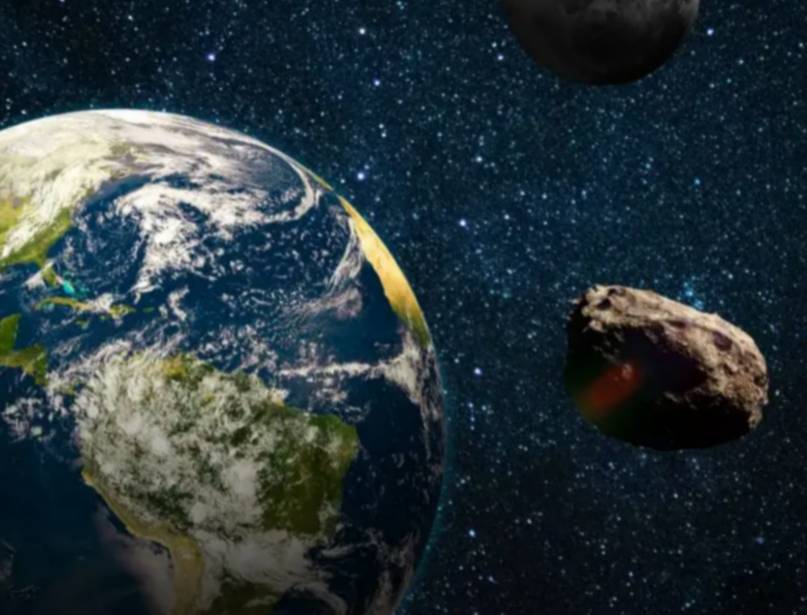Earth's New Companion: Asteroid 2024 PT5 Becomes Temporary Mini-Moon
On September 29, astronomers witnessed a rare celestial event: Earth captured a tiny asteroid, transforming it into a temporary mini-moon. The asteroid, named 2024 PT5, measures approximately 10-20 meters in diameter and is now orbiting our planet. This phenomenon has sparked scientific interest, offering valuable insights into asteroid dynamics, gravitational interactions, and the Earth-Moon system.
The Discovery
Astronomers at the Complutense University of Madrid made the groundbreaking discovery using advanced telescopic observations. The university's astronomers utilized the 1.5-meter telescope at the Sierra Nevada Observatory in Granada, Spain, to detect the asteroid's capture.
Richard Binzel, a renowned astronomer at the Massachusetts Institute of Technology (MIT), shared his expertise on this extraordinary phenomenon. "This capture provides a rare chance to examine the asteroid's composition, shape, and orbital behavior up close," Binzel explained.
Asteroid 2024 PT5: Characteristics and Origins
Asteroid 2024 PT5 is classified as a Near-Earth Object (NEO), meaning its orbit brings it within 1.3 astronomical units (AU) of the Sun. Its small size and unknown composition make it challenging to determine its origins. Scientists speculate it may be:
1. A fragment from a larger asteroid broken apart by collisions or gravitational forces.
2. A piece of space debris from planetary formation or asteroid belt collisions.
Temporary Moon Status
The asteroid's capture by Earth's gravity doesn't guarantee permanence. Its temporary mini-moon status will last only a few months or years, depending on various celestial factors:
1. Orbital stability: Asteroid 2024 PT5's orbit may decay due to Earth's gravitational interactions.
2. Solar influences: The Sun's gravity may disrupt the asteroid's orbit.
3. Planetary perturbations: Other planets' gravitational forces may affect the asteroid's trajectory.
Scientific Significance
This event offers astronomers a unique opportunity to study:
1. Asteroid dynamics: Understanding the asteroid's orbital behavior and gravitational interactions.
2. Gravitational interactions: Examining Earth's influence on small celestial bodies.
3. Earth-Moon system: Gaining insights into the stability and dynamics of our planet's satellite system.
Research Implications
The study of asteroid 2024 PT5 will:
1. Enhance understanding of asteroid origins and evolution.
2. Inform strategies for asteroid deflection and utilization.
3. Shed light on Earth's gravitational influence on small celestial bodies.
Future Research Directions
Scientists plan to conduct further research using:
1. Spectroscopic analysis: Determining the asteroid's composition and mineralogy.
2. Orbital monitoring: Tracking the asteroid's trajectory and stability.
3. Comparative studies: Analyzing similar asteroids and their interactions with Earth.
Conclusion
The capture of asteroid 2024 PT5 marks an exciting moment in space exploration, offering scientists a fleeting glimpse into the mysteries of our celestial neighborhood. As researchers continue to study this temporary mini-moon, we may uncover new insights into the complex dynamics of our solar system.
Timeline of Events
September 29: Astronomers detect asteroid 2024 PT5's capture by Earth's gravity.
October: Initial observations and spectroscopic analysis begin.
November: Orbital monitoring and comparative studies commence.
Key Facts
Asteroid 2024 PT5 measures 10-20 meters in diameter.
Its orbit brings it within 1.3 AU of the Sun.
Earth's gravity captured the asteroid on September 29.
References
Complutense University of Madrid
Massachusetts Institute of Technology (MIT)
NASA
International Astronomical Union (IAU)
European Space Agency (ESA)


